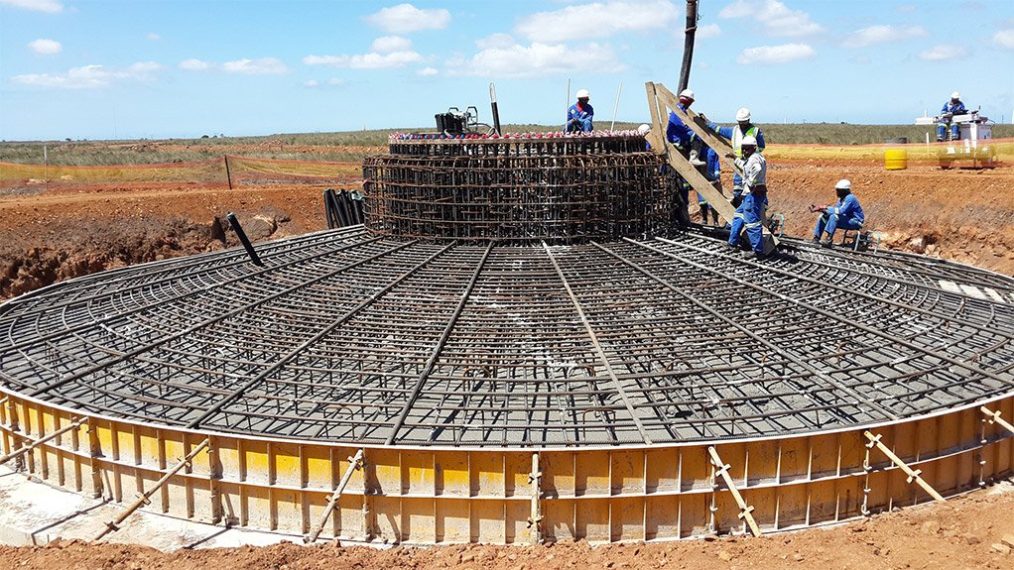
The Immense Scale of Wind Turbine Foundations in Renewable Energy Projects
North West Weekly
The Kennedy Energy Park in Hughenden, Far North Queensland, serves as a striking example of the immense scale of resources required for wind turbine foundations. As Australia continues to invest in renewable energy projects, the sheer volume of materials and the long-term impact of these developments deserve closer attention.
Each wind turbine base at the Kennedy Energy Park requires a staggering amount of materials. To construct just one foundation, over 2,222 tonnes of concrete are needed. This equates to approximately 903 cubic meters, or around 143 concrete agitator truckloads, per turbine. Additionally, nearly 90 tonnes of reinforcing steel bars, commonly known as ‘reo,’ are used to strengthen the structure. The construction process also demands over 833 tonnes of sand to complete the foundation. These figures highlight the substantial resources necessary for each individual turbine, and it is important to note that some wind projects in Australia require even larger foundations.
A critical concern with these massive foundations is that they are apparently not reusable. Unlike other infrastructure projects where materials can be recycled or repurposed, wind turbine foundations may remain buried long after the turbines themselves have been decommissioned. This raises significant questions about the long-term sustainability of wind energy.
The lifespan of wind turbines is also a topic of debate. While manufacturers initially promised lifespans of 20 to 30 years, recent reports suggest a more realistic figure might be closer to 15 years. This discrepancy has serious implications for the future of these renewable energy projects. Once turbines reach the end of their service life, what happens next? Reports from both the USA and Australia estimate that decommissioning, removing, and disposing of wind turbines can cost between $400,000 and $1,000,000 per turbine. However, the costs and feasibility of removing the massive foundations, roadways, and restoring the landscape are rarely discussed.
Can the removal of these foundations even be achieved in a practical, environmentally friendly way? If not, are we simply trading one environmental impact for another? These are questions that warrant further scrutiny as Australia moves forward with its renewable energy transition. The notion of “clean and green” energy may need a more nuanced conversation to address the broader environmental and economic impacts of large-scale wind projects.




Can the bases be used again to install another wind turbine on it . If not ,why not
Neil, The wind turbine bases are single use, once the turbine reached its life the base is useless.
Has a whole of life analysis ever been done on these monuments to Bowens stupidity? They may last 15 to 20 years and then require 100% replacement? OK so it may be just the props and the box at the top. Compatible components will have to be sourced from guess where? China of course at what price in 15 to 20 years? It does appear that we have constructed an occasional Electricity generating Ponzi scheme that ties Australia to China indefinitely and at the whim of the regime as to whether they will supply the bits to keep it going.
There isn’t any part of a Wind Turbine which can be reused. One of the main reasons being the stress loads which are applied to the whole structure during it’s life of 20 odd years. The base like the main structure holding the garbage up has been stressed into working with that which is on top. By putting new units on top as replacements would over stress these structures holding them up as well as the base anchoring. 20 years of being stressed then adding a New Load of heaveryer stress would be disastrous. We most likely will have these monuments all over the place so our Great Grandchildren can wonder at our stupidity of putting them there in the first place. I would call it part of, Bowens Babylon.